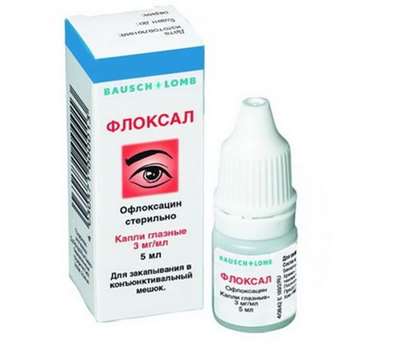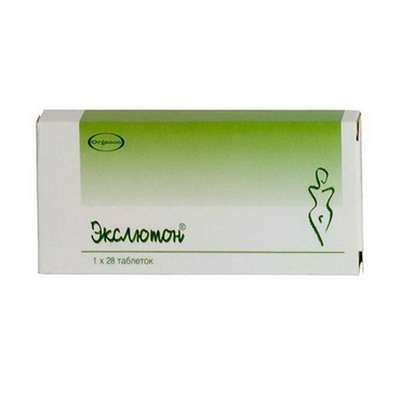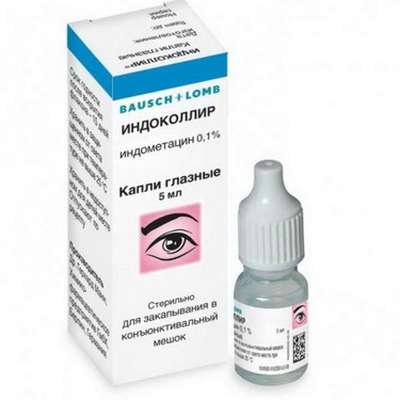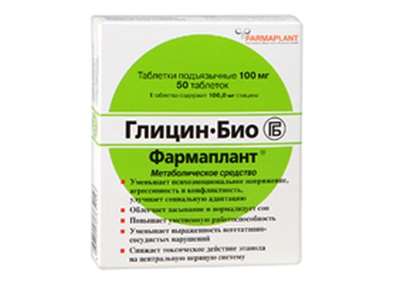Instruction for use: Visallergol
I want this, give me price
Dosage form: eye drops
Active substance: Olopatadine*
Composition
In 1 ml contains:
Active substance: olopatadine hydrochloride 2.22 mg (equivalent to 2.0 mg olopagadine);
Auxiliary substances: benzalkonium chloride 0.1 mg, povidone K-29/32 18.0 mg, sodium hydrophosphate anhydrous 5.0 mg, sodium chloride 5.5 mg, disodium edetate 0.1 mg, hydrochloric acid and / or sodium hydroxide Up to pH 7.0, water for injection up to 1 ml.
Description of dosage form
Clear solution from colorless to light yellow color
Pharmacological group
Antiallergic agent - H1-histamine receptor blocker
Pharmacodynamics
Olopatadine is a potent selective antiallergic / antihistamine drug whose pharmacological effects are developed through several different mechanisms of action. It is a histamine antagonist (the main mediator of allergic reactions in humans) and prevents the histamine-induced release of inflammatory cytokines in conjunctival epithelial cells. According to the results of in vitro studies, inhibition of the release of anti-inflammatory mediators by mast cells of the conjunctiva is assumed.
In patients with passable nasolacrimal ducts, local application of olopatadine in the form of instillations into the conjunctival sac allowed to reduce the severity of the symptoms from the nose, often associated with seasonal allergic conjunctivitis. Olopatadine has no clinically significant effect on the diameter of the pupil.
Pharmacokinetics
Suction
Olopatadin undergoes systemic absorption, as well as other drugs intended for topical administration. However, plasma concentrations of olopatadine after its topical application in ophthalmology are low and range from below quantitation (<0.5 pg / ml) to 1.3 ng / ml. The claimed concentrations in plasma are 50-200 times lower than those for oral administration of therapeutic doses of olopatadine.
Excretion
According to pharmacokinetic studies of oral forms of olopatadine, the half-life period is from 8 to 12 hours, the drug is excreted mainly by the kidneys. 60-70% of the administered dose is excreted unchanged in the urine, and low concentrations of 2 metabolites, monodesmethyl and n-oxide, are also detected in urine. Due to the fact that olopatadine is excreted by the kidneys mainly unchanged, disrupting the kidneys leads to a change in the pharmacokinetics of olopatadine, leading to a significant (2.3-fold increase) in the concentration of olopatadine in plasma in patients with severe renal insufficiency (creatinine clearance 13 ml / Min). The concentration of olopatadine in plasma after its topical application in the form of instillations is 50-200 times lower than when oral administration of therapeutic doses, therefore, changes in the dosing regimen in patients with impaired renal function are not required. Since the hepatic elimination pathway is not the main one for olopatadine, dose adjustment is not required when administered to patients with impaired hepatic function. After oral administration of 10 mg of olopatadine by patients on hemodialysis, the concentration of olopatadine in plasma was significantly lower on the day of hemodialysis compared to days when hemodialysis was not performed. This indicates that the removal of olopatadine with hemodialysis is possible.
Based on the results of comparative studies of the pharmacokinetics of oral dosage form of olopatadine at a concentration of 10 mg in young (mean age 21 years) and elderly patients (mean age 74 years), there were no significant differences in plasma concentrations of olopatadine, plasma protein binding and drug release parameters Unchanged form and in the form of metabolites.
Indications
Kupirovanie eye itching with allergic conjunctivitis.
Contraindications
Hypersensitivity to the components of the drug. Children under 3 years. Pregnancy and the period of breastfeeding.
Application in pregnancy and lactation
Fertility
Studies of the effects of topical application of olopatadine in ophthalmology on human fertility have not been conducted.
Pregnancy
Information on the local use of olopatadine in ophthalmology by pregnant women is absent or limited. In animal studies, data have been obtained on the toxic effect of olopatadine on reproductive function in systemic use. It is not recommended to use olopatadine during pregnancy and women of childbearing age who do not use contraceptive methods.
Breastfeeding period
Excretion of olopatadine in breast milk with application of the preparation in animals was noted. Risk for newborns and infants cannot be ruled out. It is not recommended to use the drug Vizallergol® during breast-feeding.
Dosing and Administration
The drug Visallergol® is instilled 1 drop once a day into the affected eye (eyes). The duration of the course of therapy, if necessary, can be up to 4 months.
Application in the elderly
It is not necessary to change the dosage regimen in elderly patients.
Use in the pediatric population
The use of Visallergol® is possible in children older than 3 years in the same doses as in adults. The effectiveness and safety of the use of olopatadine in children younger than 3 years is not confirmed.
Use in patients with renal and hepatic impairment
The use of olopatadine in the form of eye drops has not been studied in patients with renal or hepatic insufficiency. No dosage adjustment is required for the declared category of patients. Do not touch the tip of the vial to the eyelids, the skin of the peri-ocular area and other surfaces to avoid microbial contamination of the drug. Close the lid tightly after using the product.
If necessary, it can be used in combination with other medicinal products for topical application in ophthalmology, in this case the interval between their use should be at least 5 minutes.
Side effects
General information about the profile of undesirable phenomena.
In clinical trials involving 1,680 patients, the dosing regimen was 1 to 4 drops per day, the duration of the course of therapy was up to 4 months, the use of olopatadine was carried out both in monotherapy and together with loratadine at a dosage of 10 mg. The total frequency of occurrence of adverse events was about 4.5%, while the termination of participation in the clinical study due to the development of adverse reactions was noted only in 1.6% of cases. In the course of clinical studies, there were no serious adverse events, either from the organ of vision or from the body as a whole. The most common adverse reaction associated with treatment was pain in the eye, this phenomenon was noted in 0.7% of patients.
Table data on undesirable phenomena.
The following adverse events were noted during clinical trials and post-marketing use of the drug and are classified according to the following incidence rate: very often (> 1/10), often (> 1/100 to <1/10), infrequently (> 1 / 1,000 to <1/100), rarely (from> 1/10000 to <1/1000), very rarely (<1/10000), the frequency is unknown (the frequency of occurrence can not be determined from the available data). Within each group, adverse events are listed in order of severity
| System-Organ Class | Frequency of occurrence | Adverse events |
| Infectious disorders | Infrequently | Rhinitis |
| Immune system disorders | Frequency unknown | Hypersensitivity, swelling of the face |
| Disturbances from the nervous system | Frequency | Headache, dysgeusia Dizziness, hypoesthesia Drowsiness |
| Disturbances on the part of the organ of sight | Pain in the eye, eye irritation, dry eye syndrome, unusual sensations in the eye. Corneal erosion, corneal epithelial defect, renal keratitis, keratitis, pigment accumulation in the area of corneal defect in diagnostic tests, eye discharge, photophobia, blurred vision, decreased visual acuity, blepharospasm, eye discomfort, pruritus in the eye, conjunctival follicles, Disorders of the conjunctiva, the feeling of a foreign body in the eye, lacrimation, erythema eyelids, edema of the eyelids, disorders of the eyelids, conjunctival injection. Edema of the cornea, edema of the conjunctiva, conjunctivitis, mydriasis, impaired visual function, crusts on the edges of the eyelids. | |
| Disturbances from the respiratory system, chest and mediastinal organs | Infrequently | Dryness in the nose Dispno, sinusitis |
| Disorders from the gastrointestinal tract | Nausea, vomiting | |
| Disturbances from the skin and subcutaneous fat | Frequency unknown | Contact dermatitis, burning sensation of the skin, dry skin. Dermatitis, erythema. |
| Common violations | Often | Increased fatigue Asthenia, a feeling of indisposition |
In very rare cases, with the use of phosphate-containing drops in patients with concomitant significant damage to the cornea, calcification of the cornea developed.
Overdose
There is no information on the development of toxic phenomena with the occasional introduction of excessive amounts of the drug into the conjunctival cavity or accidental ingestion. When developing an overdose with accidental ingestion, treatment is symptomatic.
Interaction with other drugs
Studies of the interaction of olopatadine with other drugs have not been conducted. In vitro studies demonstrated the absence of inhibition of metabolic reactions mediated by isoenzymes 1A2, 2C8, 2C9, 2C19, 2D6, 2E1 and 3C4 cytochrome P-450. According to the results obtained, the likelihood of the introduction of olopatadine into metabolic reactions when combined with other drugs is assessed as low.
Special instructions
Olopatadine hydrochloride is an anti-allergic / antihistamine drug for topical application in ophthalmology, and, despite local application, it can be absorbed into the systemic bloodstream. If severe hypersensitivity reactions develop, discontinue use.
Vizallergol® should not be used to stop conjunctival injection caused by the use of contact lenses.
The drug contains benzalkonium chloride, which can be adsorbed by soft contact lenses and cause eye irritation. It is necessary to remove contact lenses before installation and install again no earlier than 15 minutes after instillation of the drug.
According to a number of studies, benzalkonium chloride can provoke the development of point keratopathy and / or toxic ulcer keratopathy. A careful monitoring of the patients' eyes is required with frequent or prolonged use of Vizallergol ® with concomitant dry eye syndrome, as well as with corneal involvement.
Influence on ability to drive vehicles, mechanisms
Vizallergol8 does not significantly affect the ability to manage vehicles, mechanisms. In the event that blurred vision is observed immediately after instillation, it is necessary to refrain from controlling vehicles and mechanisms until the clarity of visual perception is restored.
Release form
Eye drops, 0,2%
For 2.5 ml in a polyethylene bottle with a stopper and a screw cap with the control of the first autopsy. For 1 bottle with instructions for use in a cardboard pack.
Storage conditions
Store at a temperature of 2 to 25 ° C.
Do not freeze.
Keep out of the reach of children.
Shelf life
2 years. Drops should be used within 28 days after opening the vial.
Do not use after the expiration date stated on the package.
Conditions of leave from pharmacies
On prescription.
Manufacturer
Sentiss Pharma Pvt. Ltd.
Village Kher Nihla, Tehsil Nalagarh, Solan district, Himachal Pradesh 174 101, India

 Cart
Cart





